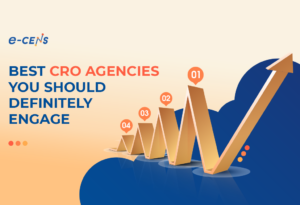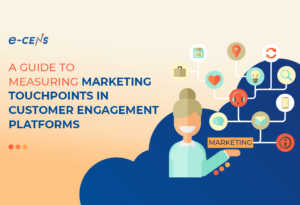As technology develops rapidly in our rushy modern world, the business landscape has joined the race as well! With thousands of enhancements and hundreds of software, catching up with all these technologies became a must, not just an advantage.
The B2B customer journey became a crucial key for driving growth and success for businesses. A B2B customer journey is defined as:
By mapping this journey out and identifying key touchpoints, your business can gain valuable insights into customer pain points and oversee opportunities for improvement.

What Are the Complexities of B2B Customer Journey Mapping?
No one can deny that creating a comprehensive customer journey map for business-to-business (B2B) interactions can be complicated. Still, it is essential to visualize the buyer’s journey and improve the overall customer experience. Unlike customer journeys in business-to-consumer (B2C) scenarios, B2B journeys involve:
- A longer sales cycles,
- Multiple decision-makers, and
- A greater importance of collaborations and partnerships.
To effectively chart out your customer’s journey, you need to:
- Establish clear objectives,
- Identify different customer segments,
- Define distinct stages,
- Compile a list of touchpoints and
- Implement measurement and analysis strategies.
The business needs will be met by utilizing the proper mapping and website analysis tools, which provide detailed insights into product experiences and user feedback. This process will enable your organization to measure success and optimize your B2B touchpoints.
B2B vs B2C Customer Journey
Understanding the Differences in B2B and B2C Customer Journeys
B2B and B2C customer journeys differ significantly in complexity and duration, as mentioned before. This is because B2B companies have a longer and more complex sales cycle due to the nature of their solutions.
Key differences between both journeys include:
- B2B buying decisions are often needs-driven to solve specific problems rather than based on want.
- B2C marketing aims to speed prospective customers to the finish line for one-time transactions, often in a matter of minutes or hours.
- B2B buying decisions are based on pain points and considerations that matter to each specific prospect and their relevant decision-makers as a group.
- B2C sales experiences are far shorter, as decision-making typically involves a single individual, while marketing and sales target campaigns at a large set of identical mass consumer markets.
How Do Customer Journeys Evolve in 2024’s Digital Marketing Sphere?
Forget about traditional B2B strategies since social media has transformed the B2B buyer approach. The impact of social media on B2B purchases can be measured through statistics, can’t it?
The statistics tell us that:
Social proofing is becoming increasingly important in the B2B customer journey. Since B2B marketing is more focused on building and maintaining relationships, providing a product’s return on investment for B2B buyers is a must. This crucial note aligns with the fact that the B2B sales process takes longer and requires more effort to close.

Understanding B2B Customer Journey Touchpoints
- Mapping Out Key B2B Customer Journey Touchpoints
- The Impact of Touchpoints on Customer Experience and Decisions
Mapping Out Key B2B Customer Journey Touchpoints
B2B customer journey touchpoints are:
“The various moments at which a customer will directly or indirectly come into contact with your brand.”
These touchpoints make up the customer journey and are key to influencing the customer experience. Identifying and mapping every touchpoint in your customer journey can help you spot pain points along the way.
Examples of B2B customer journey touchpoints include:
- Websites, mobile apps, and e-commerce portals
- Procurement departments, video conferencing, and virtual events
- Live chat, email, phone, in-person meetings and events
- Social media
- Advertising, case studies, blogs, reviews, white papers, and testimonials
- Interactions with customer service team members and accessing FAQs
- Marketing emails, customer support interactions, live chat sessions, and sales calls & meetings
The Impact of Touchpoints on Customer Experience and Decisions
Identifying the right customer journey touchpoints affects customer experience and decisions. Every touchpoint leaves an impression on the customer, whether:
- Cognitive (information about the company, the brand, and its products) or
- Emotional (feelings that arise at the moment of contact—known as brand experience).
Positive customer experiences can increase loyalty, repeat business, and positive word-of-mouth referrals, while negative experiences may result in churn and negative customer reviews.
Identifying Key Touchpoints in the B2B Journey
- Analyzing Touchpoints within Customer Journeys
- Leveraging Customer Feedback and Analytics
- Mapping Touchpoints for Different Stages and Personas
- Measuring and Analyzing the Success of the Customer Journey:
Analyzing Touchpoints within Customer Journeys
Touchpoint mapping involves analyzing individual touchpoints within the broader context of customer journeys to identify key moments influencing consumer behavior. By optimizing touchpoints, you can:
- Improve your services,
- Understand user engagement across channels,
- Pinpoint pain points at each touchpoint, and
- Prioritize resources efficiently by addressing specific issues faced within identified problem areas.
Customer touchpoints allow:
- Segmentation and study of the customer journey,
- Guide prospects through the sales funnel,
- Help identify silos and issues, and
- Improve customer loyalty.
To identify critical customer touchpoints, you can:
- Use web analytics
- Dig through customer support data and interactions
- Create customer journey maps
Leveraging Customer Feedback and Analytics
One key benefit of transactional customer feedback is gathering information about each of the business’s key touchpoints. Pareto analysis can be applied to the feedback on each touchpoint in order to determine where to invest time for maximum benefit.
Crafting an omnichannel strategy can help align all brand channels and make the customer journey more seamless. Monitoring customer journey analytics can help identify areas where customers consistently fall out of the sales funnel.
Mapping Touchpoints for Different Stages and Personas
Start with writing down all the encounters that a customer has with your company, including both online and offline interactions. Identify the specific actions or triggers that motivate B2B buyers to take the next step in their customer journey. The main stages of the B2B customer journey include:
- Awareness
- Consideration
- Decision
- Onboarding
- Support
- Retention
- Advocacy
Identifying Touchpoints:
- Homepage and CTAs
- Help Center
- Subscription Models and Rewards
Subscription Models and Rewards
Mapping Touchpoints for Different User Personas:
- High-Level Executives
Measuring and Analyzing the Success of the Customer Journey:
- Customer Journey Mapping Tools
- Website Analysis Tools
- Hotjar with Google Analytics
A customer journey map is:
“An illustration of the touchpoints and channels a customer uses when researching or interacting with a brand.”
Focus on Moments of Truth!
Identify and address process steps or touchpoints that can make or break a relationship. Consider that not every customer is the same! Customers are segmented by their experience and journey.
Measuring and Analyzing Success
All you have to do is track specific metrics at each stage to adapt to changing customer behaviors and enhance the overall buying experience.
Gather feedback through surveys, reviews, interviews, and social media monitoring to identify areas where leads face challenges.
Analyze the success of your customer journey by using both quantitative and qualitative research tools, measuring the Customer Effort Score (CES), benchmarking, and Customer Lifetime Value (CLV).
- Use customer journey mapping tools in parallel with marketing strategies, customer experience, satisfaction surveys, and related operations to gather pain points and improve your brand’s customer experience outreach.
- Based on your needs, consider creating different types of B2B customer journey maps, such as linear, circular, hierarchical, or network maps.
Conclusion
Mapping and optimizing B2B customer journey touchpoints is a critical aspect of delivering exceptional experiences and driving business growth.
Businesses can effectively nurture long-term relationships with their clients by understanding the unique characteristics of B2B customer journeys, leveraging customer feedback and data analytics, and personalizing interactions across various touchpoints.
Implementing a comprehensive B2B customer journey mapping strategy requires a collaborative effort across different teams, including marketing, sales, customer service, and technology.
By continuously refining and adapting your touchpoint strategy based on evolving customer needs and market trends, you can stay ahead of the competition and foster a customer-centric culture within your organization.
Strategize Your Customer Journey Map!
Unlock the full potential of your B2B customer journey,




